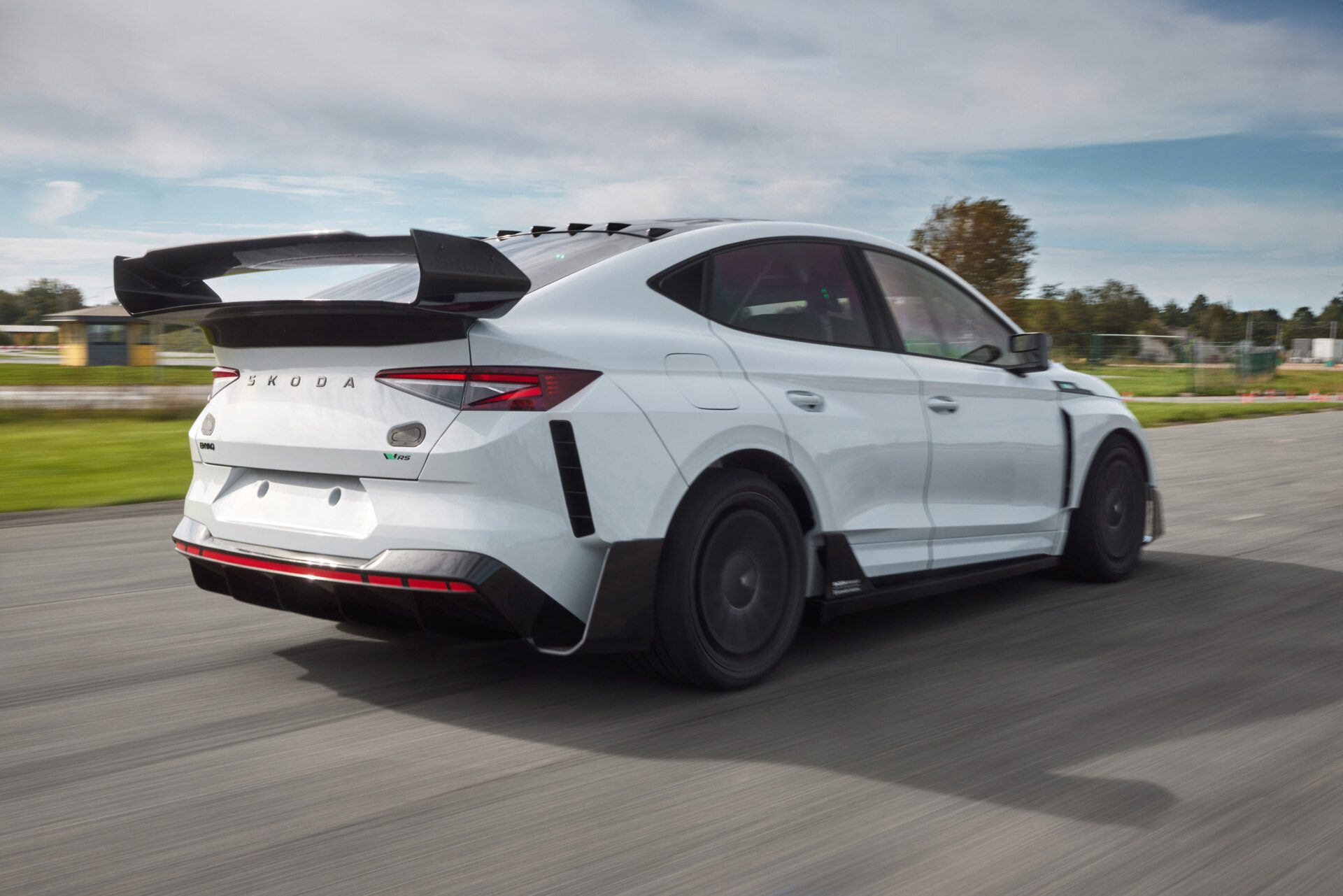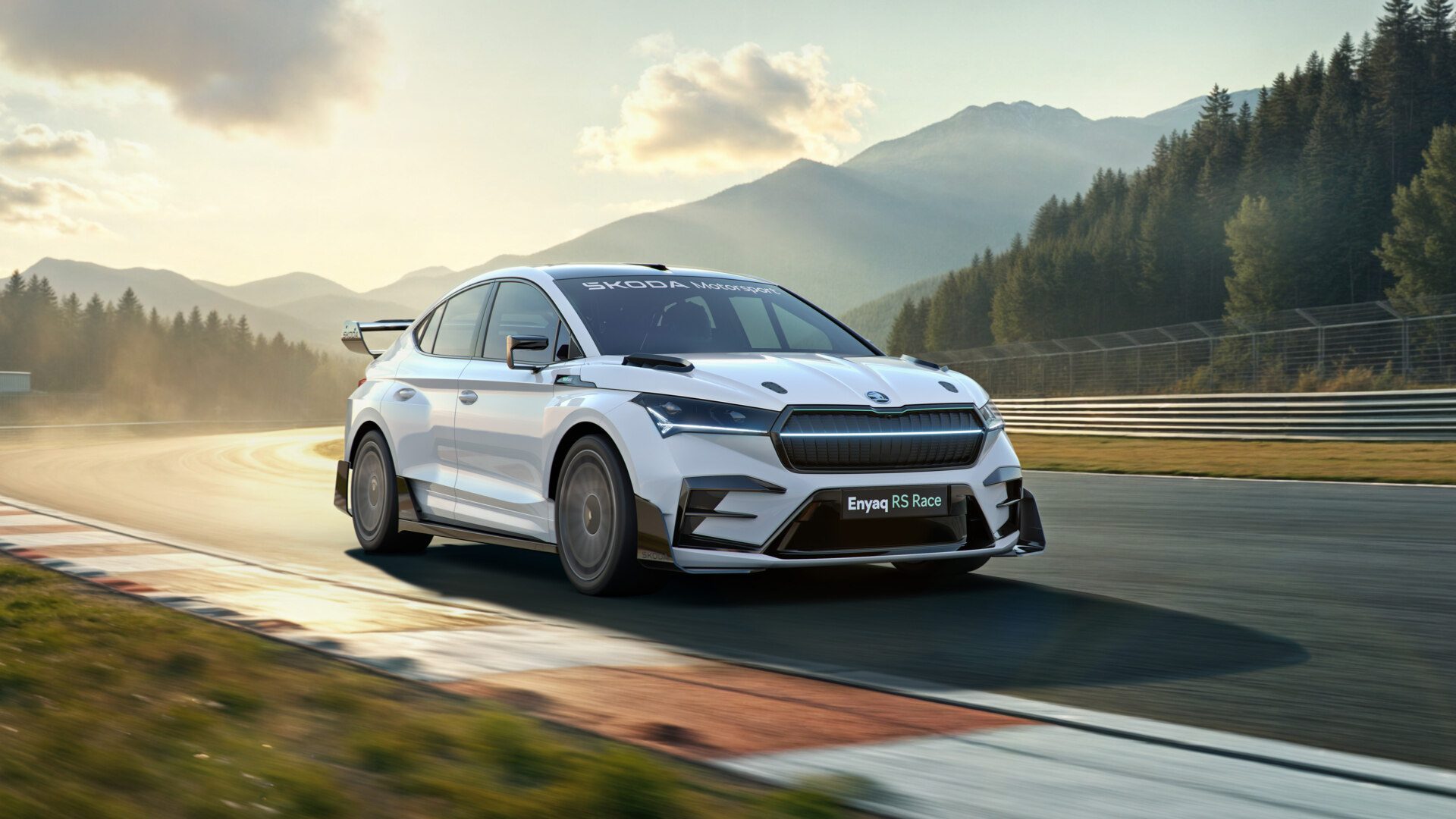Despite there being a sporty vRS variant, it’s not the car you’d first think to base a racer upon. That didn’t stop Skoda Motorsport from creating the Enyaq RS Race, however.

Skoda says the concept will serve “as a pilot project for future production models”.
Johannes Neft, Skoda’s chief technical officer said: “Biocomposite parts have led to a significant weight reduction, and we are trialling them in motorsport with a view to future implementation.”

The Enyaq RS Race uses the same dual-motor electric powertrain as the vRS, delivering 250kW. The motors are powered by an 82kWh battery pack. With overall weight reduced by 316kg, the sprint time drops from 5.3 seconds to under five in the Enyaq RS Race.

Skoda replaced the glass windows with polycarbonate on the sides and rear. Biocomposites were used in the bodywork, including the bumpers, fenders, roof and rear wing.

There’s still a 13-inch touchscreen but the rest of the Enyaq’s interior has been stripped out. Bucket seats, a roll cage, a fire extinguisher and safety foam panels were added.

The Enyaq RS Race rides 70mm lower the road car, with different shocks and springs. A special underside protect the battery pack. Brakes are carbon-ceramic units, using ten-piston calipers at the front and four-piston calipers to the rear. The car runs on new 20-inch wheels.

Inside is a Havas premium sound system that incorporates a digital sound amplifier. This delivers what Skoda describes as a “characteristic, exhilarating motorsport sound”. It is more powerful than the regular Enyaq Coupé vRS sound system, and allows the note to be changed. The sound kicks in above 29km/h, ensuring an exciting acoustic experience during the drive.

Along with the body kit, there are also darker front and rear lights, while the production car’s illuminated ‘Crystal Face’ grille no longer lights up. Don’t expect too many of these to roll off any Skoda production line any time soon.


